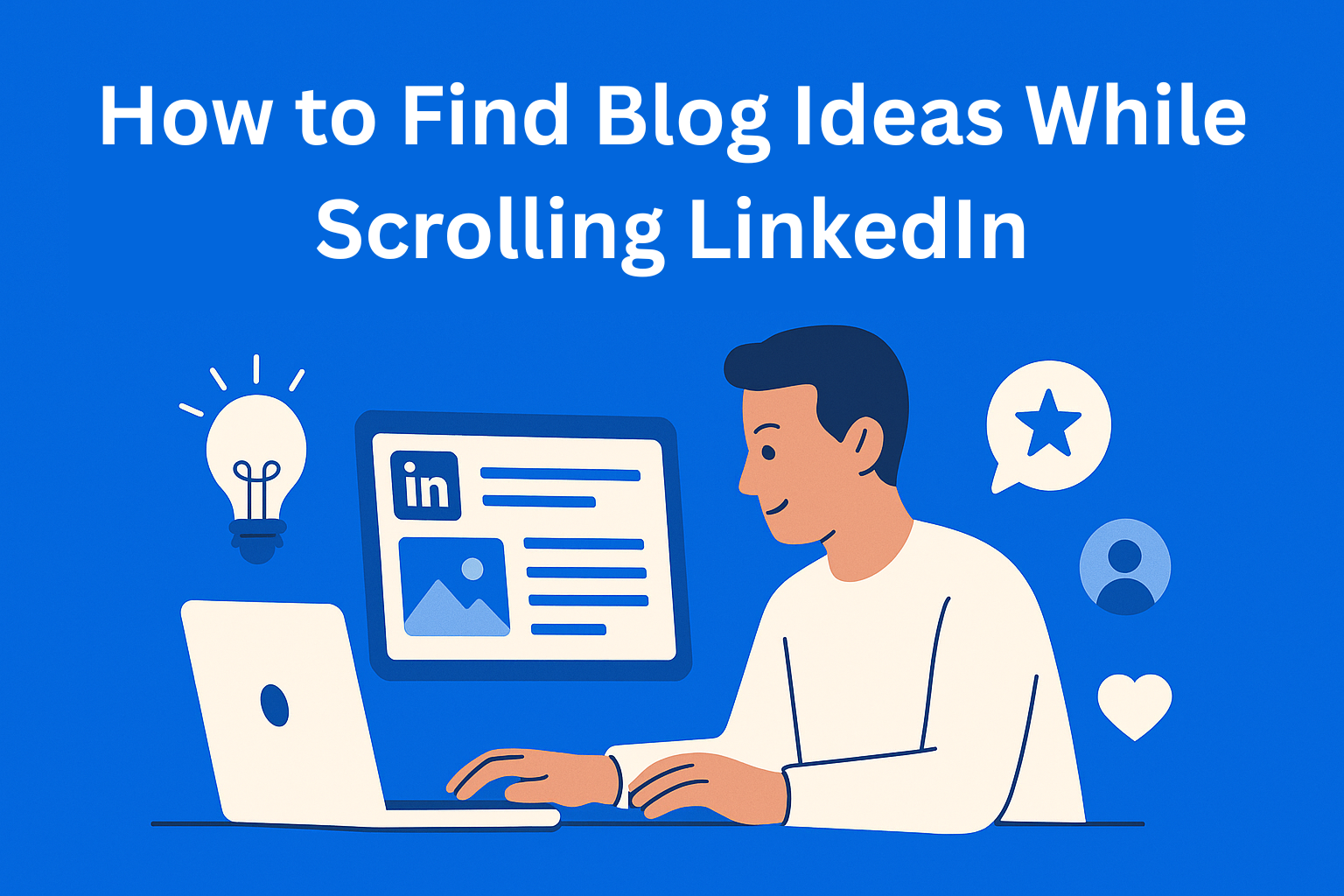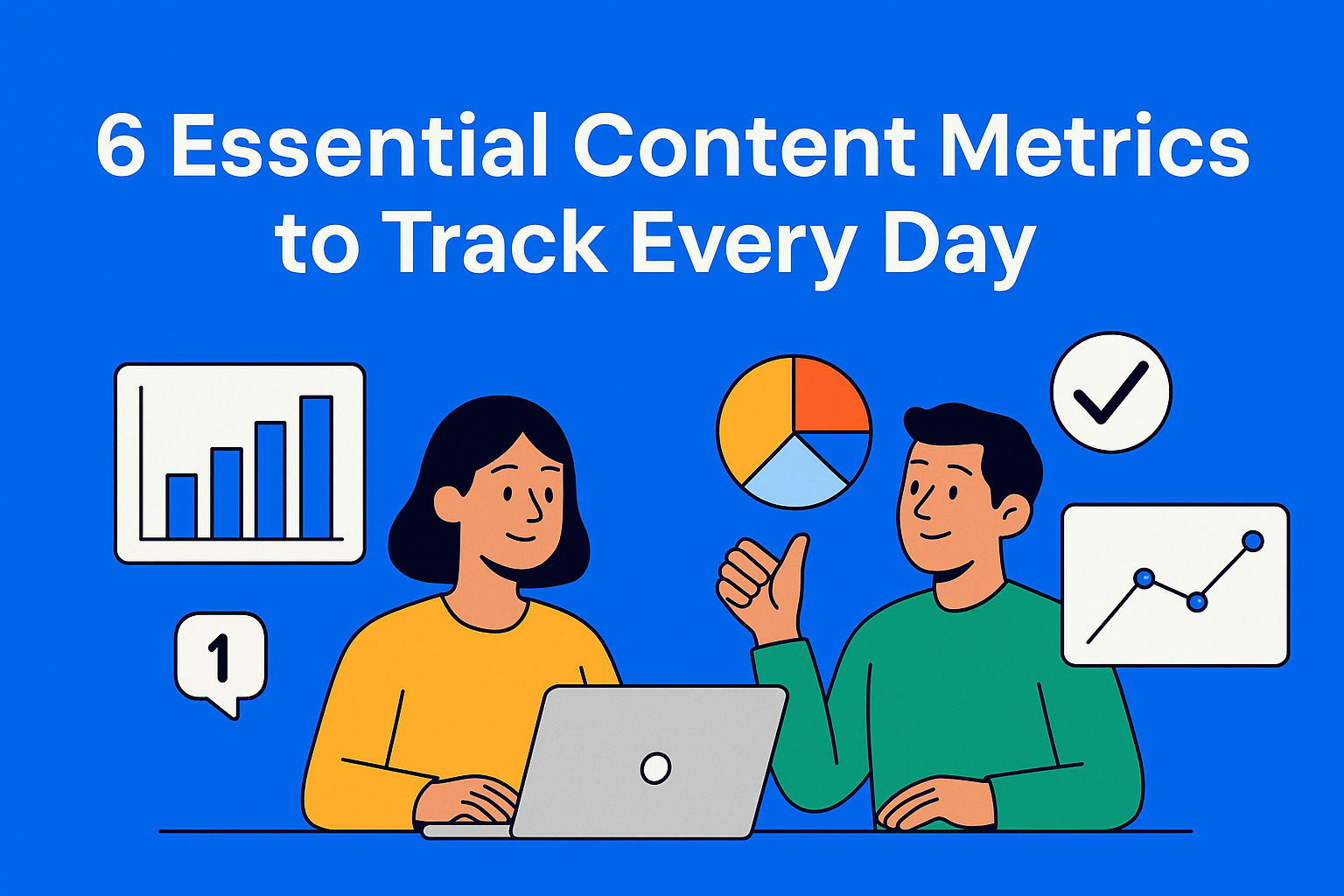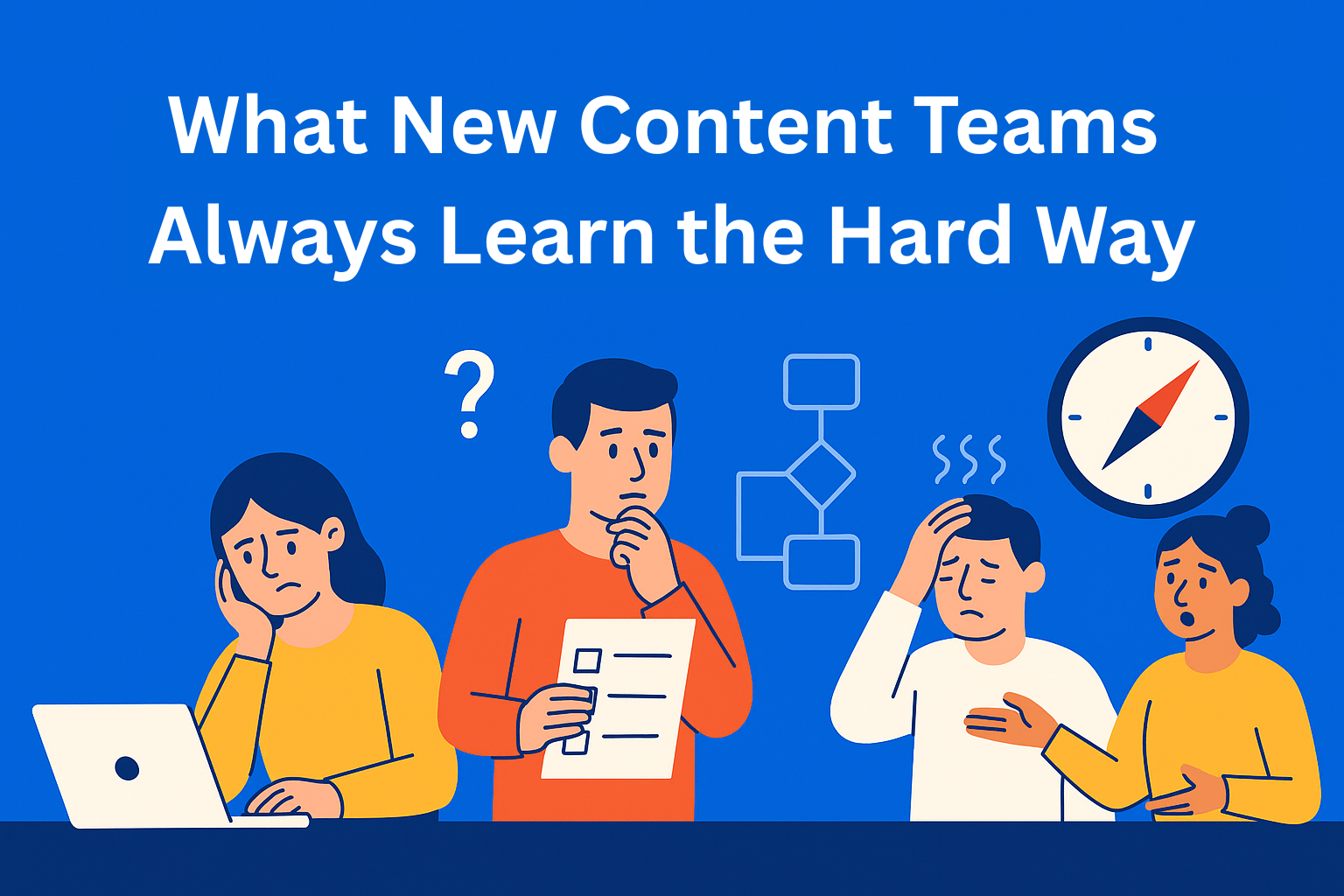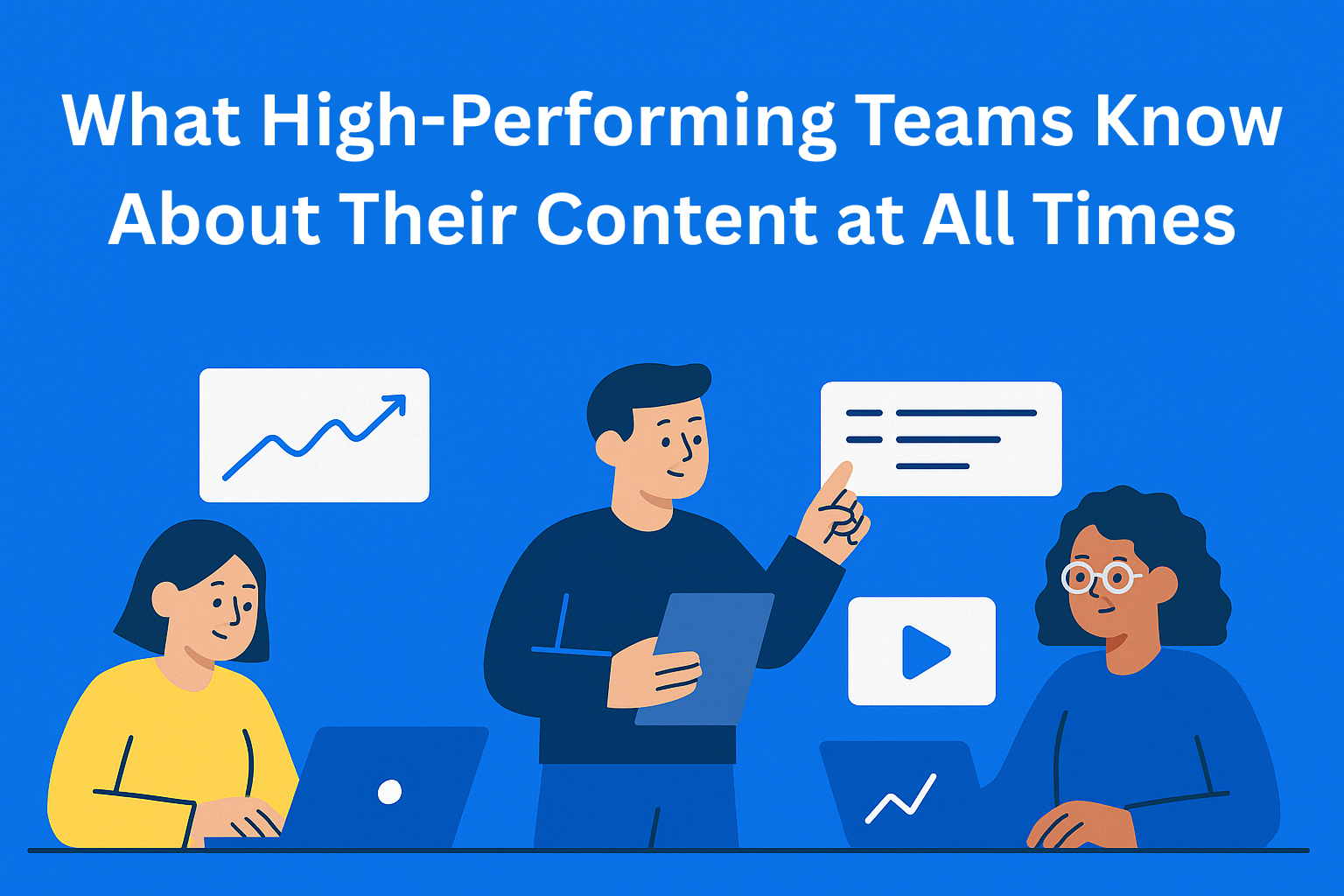How to Spot Blog-Worthy Topics While Scrolling LinkedIn
Learn how to find blog-worthy ideas while scrolling LinkedIn. Discover trends, insights, and hidden content opportunities that resonate with your audience and turn everyday posts into high-impact blog topics.

LinkedIn is much more than a network for job hunting and connecting with colleagues. If you approach it the right way, it can become your endless source of blog ideas. Every day, thousands of people share their experiences, opinions, and real-life stories. Hidden in those posts are topics that can inspire your next article. In this blog, you’ll learn how to recognize blog-worthy ideas while scrolling through LinkedIn, how to spot trends, and how to turn post insights into relevant, high-quality content.
Key Takeaways
- LinkedIn is a live idea feed - real stories, opinions, and questions are shared daily, offering fresh inspiration for blog content.
- Engagement is your compass - posts with strong discussion, reactions, or debate signal topics with real depth and relevance.
- Trends live in the comments - micro-trends and emerging questions often start small; noticing them early gives your content an edge.
- One post can spark many angles - take a question, debate, or recurring theme and turn it into analysis, storytelling, or how-to guides.
- Capture, organize, repeat - having a system for collecting blog-worthy posts is key to turning casual scrolling into content strategy.
LinkedIn as a Hidden Goldmine of Ideas
Most people use LinkedIn to see who changed jobs, who got promoted, or to share news about their projects. But if you start looking at LinkedIn as a source of inspiration, you’ll see how many valuable ideas appear every day. People talk about their failures, industry changes, work challenges, habits, and mindset shifts. All of these are potentially blog-worthy topics.
The key is not to scroll aimlessly. Instead of just glancing at posts, look at them while asking yourself:
What can I learn from this? or
Could this make a good blog topic?
Once you start thinking that way, you’ll realize inspiration is everywhere.
Scroll with Intention, Not Randomly
Intentional scrolling means you don’t look at everything, but instead choose content that makes sense for your field and audience. The first step is to define who your target audience is. When you know who you’re writing for, it becomes easier to identify which topics have potential.
Next, use the search bar and follow relevant hashtags related to your industry. For example, if you write about marketing, follow tags like #contentmarketing, #branding, #socialmedia. Follow people who share valuable insights, not just those with large followings, but those who spark meaningful discussions.
When you see a post with lots of comments, likes, or shares, stop and take a closer look. That means the topic resonated with the audience. These are exactly the kinds of posts that can lead you to your next blog idea.
How to Recognize a Post with Blog Potential
Not every LinkedIn post is worth your time, but there are clear signs that show when you’ve found something interesting:
- Pay attention to the type of engagement. If a post creates discussion in the comments, it’s a sign that the topic resonates with people. They wouldn’t comment if it didn’t speak to them.
- Notice how people react. Do you see the same questions coming up in the comments? Are there disagreements or debates? That shows the topic has depth and can be explored from different angles. If you notice the same topic appearing in multiple posts throughout the week, that’s a clear signal of a trend.
For example, if more and more people are talking about artificial intelligence in marketing, that’s a perfect opportunity to write a blog about how AI is changing content creation or analytics. This approach helps you easily spot content that’s meaningful and long-lasting.
Catch Trends and Micro-Trends
One of the most useful skills on LinkedIn is being able to notice a trend while it’s still new. Big trends are obvious, everyone talks about them. But micro-trends are even more interesting because they’re fresh and rarely explored. It might be a new idea, a tool, a work method, or a mindset shift within your industry.
To recognize them, pay attention to words or phrases that start appearing more often in posts. Use LinkedIn’s search to check how frequently a certain topic is mentioned.
You can also follow LinkedIn Pulse or newsletters from your field since they track popular discussions and sometimes predict the next wave of trends. When you spot a topic like that, act fast and create your own angle before it becomes overused.
From LinkedIn Post to Blog Idea
Finding an interesting post is just half the job. The next step is turning that idea into a blog topic with depth. There are several ways to do this:
- Take a comment or question from a post and expand it into a full article. If someone asked a good question that doesn’t have enough answers, your blog can provide them.
- Combine several similar posts into one overarching theme. For example, if multiple people are talking about work-life balance, write a blog analyzing why it’s such a relevant topic and what common mistakes people make.
- Add your personal perspective. If someone shared an experience from their career and you’ve gone through something similar, you can add your viewpoint and provide value the original post didn’t have. People love honest stories because they connect with them easily.
Create a System for Capturing Ideas
The best ideas come when you least expect them, so it’s important to have a system for keeping track of them. It can be a simple Google Sheet, Notion table, or EasyContent idea section.
You can also use LinkedIn’s Save Post feature to save posts that caught your attention. When you have time, go through those posts and think about which ones could become blog topics. If you notice certain themes repeating, it’s a clear sign your audience is showing interest in them.
The key to success is consistency. The more you practice recognizing content with potential, the faster and easier it becomes to find ideas that work for you and your readers.
Conclusion
LinkedIn isn’t just a professional networking platform. It’s a daily source of ideas, trends, and insights that can make your blogging process more productive and inspiring. Once you learn to scroll consciously, you start seeing posts not as fleeting updates, but as raw material for new articles.
This way, every LinkedIn session can turn into a mini content creation workshop. Instead of wasting time scrolling aimlessly, you’ll be researching your audience, discovering what interests them, and learning how to provide real value through your blog.
Finally, ask yourself: Which LinkedIn post made me think the most recently? If you have an answer to that, you already have the starting point for your next blog.






